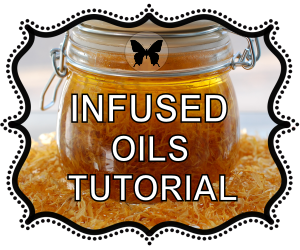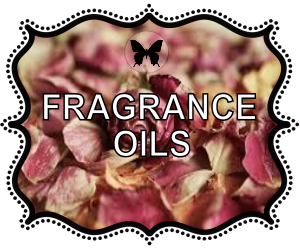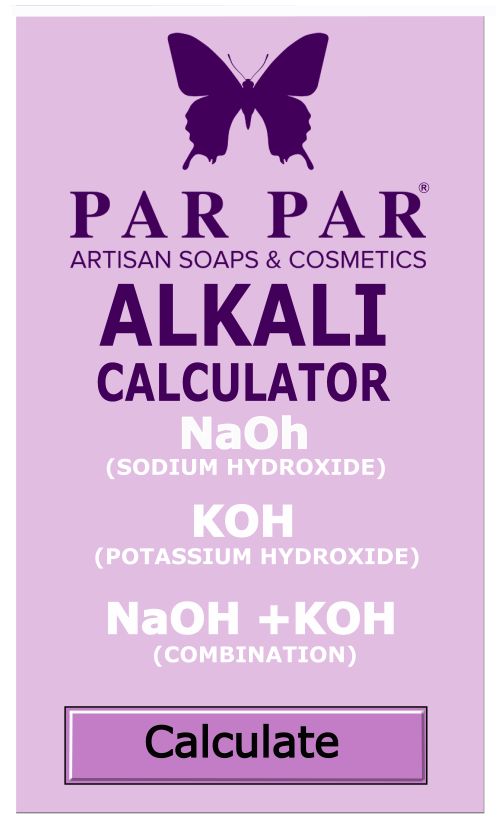
Table of Contents
What is Candlenut Oil?
Specifications
How to Use Brazil Nut Oil





C andlenut, scientifically known as Aleurites moluccanus, is a flowering tree native to Southeast Asia. It is also known by various names such as kukui nut tree, Indian walnut, and kemiri in Indonesian. The tree produces large, round seeds that are commonly referred to as candlenuts due to their traditional use as a source of oil for candle-making.
The candlenut tree has been cultivated for its nuts, which have a high oil content. The nuts are not typically consumed raw due to their slightly toxic properties, but they are used in various culinary applications after proper processing. The nuts are often roasted or otherwise prepared to remove toxins, making them safe for consumption.
In Southeast Asian cuisine, candlenuts are a common ingredient, particularly in Indonesian, Malaysian, and Singaporean dishes. They are often ground into a paste and used as a base for rich and flavorful sauces, curries, and other dishes. The oil extracted from candlenuts is also used in cooking. Additionally, candlenuts have been used traditionally in various folk medicines and skincare products.
It’s worth noting that while candlenuts have culinary and cultural significance in certain regions, they should be handled and prepared with care due to their toxic nature when raw.
What Are Candlenuts Used For?
Candlenuts are used for various purposes, primarily in culinary and traditional applications. Here are some common uses of candlenuts:
-
Culinary Use:
- Cooking Oil: The nuts contain a high amount of oil, and this oil is extracted and used for cooking. It has a mild flavor and is often used in Southeast Asian cuisines.
- Condiment Base: Candlenuts are often ground into a paste and used as a base for traditional sauces and curries. The paste adds a rich and nutty flavor to dishes.
- Thickening Agent: In some recipes, candlenut paste is used as a thickening agent for soups, stews, and sauces.
- Traditional Medicine:
- In traditional medicine practices in some regions, candlenuts have been used for their potential medicinal properties. They are believed to have anti-inflammatory and analgesic effects.
- Skincare:
- Candlenut oil is sometimes used in skincare products due to its moisturizing properties. It is thought to be beneficial for the skin and hair.
- Candle Making:
- Historically, the oil extracted from candlenuts was used for making candles. The high oil content in the nuts made them suitable for this purpose.
-
Soap Making:
- The oil from candlenuts can also be used in the production of soap.
It’s important to note that candlenuts are toxic when raw, containing substances that can be harmful if ingested. Therefore, they are typically processed before use in cooking or other applications to remove these toxins. Proper cooking or roasting is essential to make candlenuts safe for consumption. Always follow recommended culinary practices when using candlenuts in recipes.

Saponification Value of Candlenut Oil: 185-196
Saponification Values and Why They Vary
- NaOH – Sodium Hydroxide Multiplyer (oz): 0.14
- KOH – Potassium Hydroxide Multiplyer (oz): 0.197
- Quick and Easy – Use the Par Par Alkali Calculator
Keep in mind that these values can serve as a general guideline, and actual values may vary based on the specific characteristics of the candlenut oil being used. If you need precise information for a specific product or application, it’s recommended to refer to the supplier’s specifications or consult a reliable source for accurate data.
FATTY ACIDS COMPOSITION (Fatty Acid Fraction):
| Lipid | Fatty Acid | Range | Typical | Soap Property |
|---|---|---|---|---|
| C18:2 | Linoleic | 33.0-38.0% | 36% | Conditioning, Moisturizing, Silky Lather |
| C18:1 | Oleic | 36.0-45.0% | 41% | Conditioning, Moisturizing |
| C16:0 | Palmitic | 16.0-20.0% | 18% | Hardness, Stable Creamy Lather |
| C18:0 | Stearic | 9.0-13.0% | 11% | Hardness, Stable Lather |
IODINE VALUE: 80-120
The iodine value of an oil is a measure of the amount of iodine that can be absorbed by the oil, indicating its degree of unsaturation or the presence of double bonds in the fatty acid chains. Iodine affects the hardness and conditioning qualities of soap. The lower the Iodine Value, the less conditioning and harder the soap batch will be. Therefore a soap recipe with iodine values higher than 70 will tend to produce a softer batch of soap. The iodine value is expressed in grams of iodine absorbed by 100 grams of the oil. The iodine value of candlenut oil can vary, and specific values may depend on factors such as the source of the oil and the extraction method. Generally, the iodine value for candlenut oil falls within the range of approximately 80 to 120.
It’s important to note that iodine values are influenced by the fatty acid composition of the oil. Oils with higher iodine values tend to be more unsaturated and may have a greater susceptibility to oxidation. If you need precise information for a specific product or application, it’s recommended to refer to the supplier’s specifications or consult a reliable source for accurate data.
How iodine affects the quality of your soap.
INCI: Aleurites Moluccana (Candlenut) Seed Oil
How to Label Your Homemade Soaps and Cosmetics for Sale
INCI Names of Soap and Cosmetic Ingredients

PROPERTIES OF CANDLENUT OIL:
Candlenut (Aleurites moluccanus) possesses various properties that make it useful in different applications, including culinary, traditional medicine, and skincare. Here are some notable properties of candlenuts:
-
High Oil Content: Candlenuts are known for their high oil content, which is extracted and used in cooking, skincare, and soap making. The oil has a mild flavor and is rich in fatty acids.
- Nutritional Value: While not commonly consumed in their raw form due to their slight toxicity, candlenuts do contain nutrients such as protein, fiber, and minerals.
- Toxicity: Raw candlenuts contain toxins, including saponins and phorbol esters. Proper processing, such as roasting, is necessary to remove these toxins and make the nuts safe for consumption.
- Culinary Use: Candlenuts are a key ingredient in Southeast Asian cuisines, especially Indonesian and Malaysian dishes. They are often ground into a paste and used as a base for sauces and curries, adding a rich, nutty flavor.
- Traditional Medicine: In some traditional medicine practices, candlenuts have been used for their potential anti-inflammatory and analgesic properties. However, their medicinal use requires caution due to the toxic compounds present in raw nuts.
- Skincare: Candlenut oil is used in skincare products for its moisturizing properties. It is believed to be beneficial for the skin and hair, providing hydration and nourishment.
- Candle and Soap Making: Historically, candlenut oil was used for making candles due to its high oil content. Additionally, the oil can be utilized in soap making.
-
Iodine Value: The iodine value of candlenut oil indicates its degree of unsaturation. Candlenut oil typically has an iodine value in the range of 80 to 120.
It’s essential to handle and process candlenuts properly to eliminate toxins before use, particularly in culinary applications. Additionally, when using candlenut oil in skincare or cosmetic products, it’s crucial to consider its properties and potential benefits for the skin.
SPECIFICATIONS
Color, Viscosity, and Aroma:
The color, viscosity, and aroma of candlenut oil can vary based on factors such as the extraction method, processing, and the source of the candlenuts. Here are general characteristics:
-
Color: Candlenut oil is typically pale to light yellow in color. The exact shade may depend on factors like the degree of refinement and the specific characteristics of the oil.
- Viscosity: Candlenut oil generally has a medium viscosity. It is not as thick as some heavy oils but is not as light as certain carrier oils. The viscosity can be influenced by factors such as temperature; the oil may become thicker at cooler temperatures.
-
Aroma: Candlenut oil has a mild and nutty aroma. The scent is often described as pleasant and light. The aroma of the oil can add a subtle nutty note to culinary dishes and may be used in skincare products without overpowering other scents.
It’s important to note that individual perceptions of aroma can vary, and the scent of candlenut oil might be influenced by factors like the extraction process and the freshness of the oil. Additionally, if the oil is refined, it may have a milder scent compared to unrefined versions.
When purchasing candlenut oil for specific uses, such as culinary or skincare applications, it’s advisable to check the product descriptions or consult with the supplier for more detailed information on color, viscosity, and aroma.
Products That Use This Ingredient:
Candlenut oil is used in various products, particularly in the culinary, cosmetic, and skincare industries. Here are some examples of products that may incorporate candlenut oil:
-
Culinary Products:
- Cooking Oils: Candlenut oil is used as a cooking oil in Southeast Asian cuisines, especially in Indonesian and Malaysian dishes. It adds a mild, nutty flavor to the food.
- Sauces and Condiments: Candlenut paste, made from ground candlenuts, is a common base for sauces and condiments in Southeast Asian cooking.
- Skincare and Cosmetic Products:
- Moisturizers: Candlenut oil is known for its moisturizing properties, and it may be used in skincare products like moisturizers, lotions, and creams.
- Soaps: The oil extracted from candlenuts can be used in soap formulations, contributing to the soap’s moisturizing qualities.
- Hair Care Products: Candlenut oil is sometimes found in hair care products such as shampoos and conditioners, providing nourishment and shine to the hair.
- Traditional and Medicinal Products:
- Traditional Medicines: In some cultures, candlenuts have been used in traditional medicine for their potential anti-inflammatory and analgesic properties. However, caution is required due to the toxic compounds in raw candlenuts.
- Herbal Remedies: Candlenut oil may be incorporated into herbal remedies and traditional healing formulations.
- Aromatherapy Products:
- Massage Oils: Candlenut oil’s mild and nutty aroma makes it suitable for use in massage oils, contributing to a pleasant sensory experience during massage therapy.
-
Natural and Organic Products:
- Organic Skincare: Due to its perceived natural and nourishing qualities, candlenut oil is sometimes used in organic and natural skincare products.
When considering products with candlenut oil, it’s important to check the ingredient list on the product packaging or consult with the manufacturer. Additionally, if you have specific allergies or sensitivities, it’s advisable to perform a patch test before using products containing candlenut oil on a larger scale.
Shelf Life:
The shelf life of candlenut oil can vary depending on several factors, including how the oil is processed, stored, and whether any preservatives are added. In general, the shelf life of most oils, including candlenut oil, is influenced by factors such as exposure to air, light, and heat.
Here are some general guidelines:
- Unrefined or Cold-Pressed Candlenut Oil: Oils that are less processed and retain more of their natural components, like unrefined or cold-pressed candlenut oil, may have a shorter shelf life. They are typically best used within 6 to 12 months.
- Refined Candlenut Oil: Refined oils undergo a more extensive processing method, which may include filtration and removal of impurities. Refined candlenut oil tends to have a longer shelf life compared to unrefined versions and can last up to 12 to 18 months or more.
To maximize the shelf life of candlenut oil:
- Store it in a cool, dark place, away from direct sunlight.
- Keep the container tightly sealed to prevent exposure to air.
- Avoid exposing the oil to extreme temperatures or fluctuations in temperature.
It’s important to note that over time, oils can become rancid due to oxidation. Signs of rancidity include a change in color, an off smell, or a bitter taste. If you notice any of these signs, it’s advisable to discard the oil.
Always check the manufacturer’s recommendations and any expiration date provided on the product packaging. If you’re unsure about the quality or safety of the candlenut oil, it’s best to replace it with a fresh supply.
Best Used By: Use within one year from date of purchase. Exposure to extreme heat will lessen the shelf life of almond oil
Storage: Room temperature. Airtight container.
Cautions: While candlenut oil is generally considered safe for use, there are some cautions and considerations to keep in mind:
-
Toxicity in Raw Nuts: Raw candlenuts contain compounds such as saponins and phorbol esters that can be toxic. Consumption of raw candlenuts is not recommended due to these toxins. Proper processing, such as roasting, is essential to make the nuts safe for consumption.
- Allergies: Individuals with nut allergies should exercise caution when using candlenut oil, even though it is technically a seed oil. It’s advisable to perform a patch test before using candlenut oil extensively, especially in skincare products.
- Potential for Irritation: While candlenut oil is generally well-tolerated, individual reactions can vary. In rare cases, some individuals may experience skin irritation or allergic reactions. If you notice any adverse effects, discontinue use and consult with a healthcare professional.
- Shelf Life: Like any oil, candlenut oil can become rancid over time due to oxidation. Pay attention to the product’s expiration date and storage recommendations to ensure its freshness.
- Use in Cooking: When using candlenut oil in cooking, be mindful of its mild and nutty flavor. While it is a common ingredient in certain cuisines, its distinct taste may not be suitable for all dishes.
-
Pregnancy and Breastfeeding: Pregnant or breastfeeding individuals should exercise caution with herbal and traditional remedies containing candlenut oil, as the safety of its use during these periods is not well-established.
Disclaimer: All information, appearing herein is based upon data that are believed to be reliable. However, it is the user’s responsibility to determine the suitability of the product before use. Since the actual use of the product is beyond our control, no guarantee, express or implied, is made by Par Par Soaps & Cosmetics of the product nor does Par Par Soaps & Cosmetics assume any liability arising out of use, by others, of the product, referred to herein.
Fatty Acid Composition Source: https://pubchem.ncbi.nlm.nih.gov/
Affiliate Disclosure: I am grateful to be of service and bring you content free of charge. In order to do this, please note that when you click links and purchase items, in most (not all) cases I will receive a referral commission. Your support in purchasing through these links enables me to keep Par Par Academy of Soaps & Cosmetics free, and empower more people worldwide to make soap safely and easily. Thank you!

